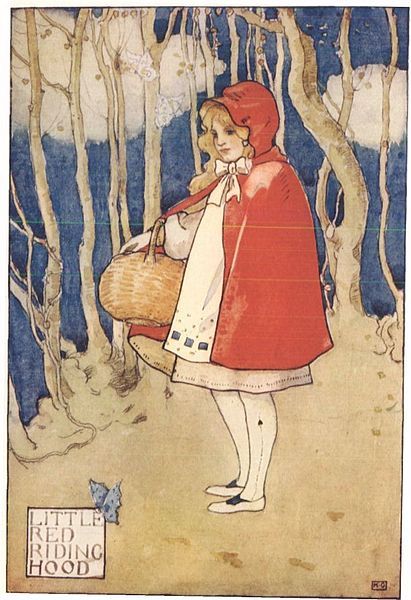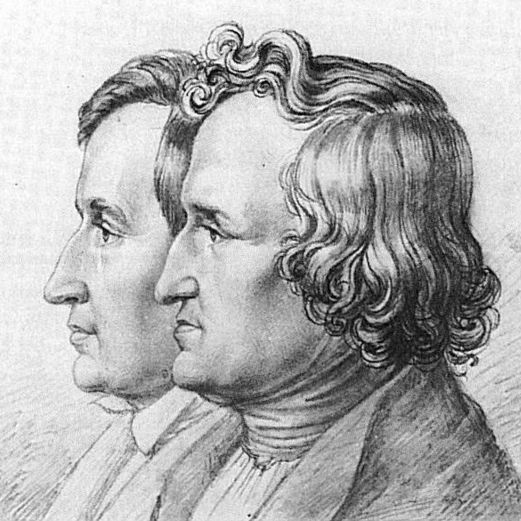by Dieter Petzold
“Once upon a time there was . . .”: The very opening formula of fairy tales suggests quaintness, the patina of the long-ago, the flavor of the outmoded. If fairy tales, as a genre, are the opposite of modernity, why is it, then, that they have survived thousands of years? One answer is that they deal with things that are timeless and universal, basic aspects of the human condition – offering the reader, in Tolkien’s words, consolation, the recovery of a clear view, and the chance to escape the bleakness of the quotidian. Another is that, being originally transmitted orally, they have no definite shape and are thus infinitely adaptable to the needs and interests of their specific audiences. We tend to forget this, since the most successful recorders of fairy tales, men like Charles Perrault, Antoine Galland, Jacob and Wilhelm Grimm, Hans Christian Andersen or Joseph Jacobs, have given their tales permanent shapes, turning what once were protean entities into classical texts with a canonical status.

Nevertheless, fairy tales have of course continued to be re-told, adapted, transformed, modernized. Seen from this angle, there is little unusual about the collection of modernized fairy tales to be reviewed here. What makes it particularly interesting is the fact that The Fairies Return Or, New Tales for Old, which was recently published with an introductory essay by the renowned folklorist Maria Tatar, is really a reprint of a collection that first appeared in 1934. The modern editor makes much of the fact that the original collection was commissioned and edited by Peter Davies, who was the adopted son of James Barrie (the author of Peter Pan); but since Davies never bothered to explain what exactly he was up to, his editorship as such says little about the book. What does make this collection unique is that it is one of the first collections (if not the first) of radically modernized fairy tales written specifically for an adult audience. (It is true that England has also a long history of stage adaptions of fairytale material, “Christmas Pantomimes” and “Fairy Extravaganzas”, that dates back to the late 18th century, but that is a different matter.) It thus reflects not only the ambivalent contemporary attitudes towards fairy tales, but more generally the concerns and preoccupations of the British society of the early 1930s.
The fourteen tales that were chosen for ‘modernization’ are still well-known, belonging to the very core of the European fairytale tradition; the authors of these new versions, alas, will be much less familiar to most present-day readers, even though they are all fine writers who were quite popular at their time (as Tatar explains in her biographical appendix). Here is the complete list: “Jack the Giant Killer” by A.E. Coppard; “Godfather Death” by Clemence Dane; “The Fisherman and His Wife” by E.M. Delafield; “Little Snow-White” by Lord Dunsany; “Aladdin” by Anna Gordon Keown; “Sindbad the Sailor” by Eric Linklater; “Ali Baba and the Forty Thieves” by A.G. Macdonell; “Puss in Boots” by Helen Simpson; “The Little Mermaid” by Lady Eleanor Smith; “Little Red Riding-Hood” by E. Œ. Somerville; “Cinderella” by Robert Speaight; “‘O, If I Could but Shiver!’” by Christina Stead; “The Sleeping Beauty” by G.B. Stern; and “Big Claus and Little Claus” by R.J. Yeatman and W.C. Sellar.
All these tales are highly entertaining, but the description of each and every one in a review would perhaps be a bit tedious. Let us see, instead, what they have in common and how, on the other hand, the authors’ responses to the same task go quite different ways. The first observation is that to all writers, modernization of fairy tales means amplification; or, to be more precise, providing details that make their fictional worlds seem more ‘real’ than the silhouette worlds of traditional folktales. In other words, these stories are closer to what is now known as fantasy fiction – urban fantasy, predominantly, since most stories are set in a fantastically transmogrified London or in other large cities. Secondly, modernization to these writers means taking an ironic stance – a self-conscious awareness of the strangeness of the worlds described. In many cases, this ironic stance produces humorous treatments of the well-known plots; but it does not necessarily preclude the option of taking fairy tales seriously.

To most writers, modernization also involves transferring the story into their own modern world – thus, in most cases, using the well-known plot structure as a means not to make fun of fairy tales, but to present the ‘real world’ in a satirical light. The opening tale, “Jack the Giant Killer” by A.E. Coppard, can be read as a political allegory since the giants named Demos, Kudos and Osmos, who at first seem friendly and harmless enough but are really man-eaters, might be taken as metaphors for the threat of Nazism (that pursues its aims by appearing in turns populist, glamorous, and bullying). More frequently, the target of these satirical stories is what is known as ‘High Society’: the ambitions of ‘upstarts’, the shallowness, vanities and snobberies of those who regard themselves as being above the common people. It should be noted that this subversive element is already contained in some original stories such as the Grimm brothers’ “The Fisherman and His Wife” or Perrault’s “Puss in Boots”, but Davies’ authors apply it also to such classics of feminine romantic daydreams as “Little Snow-White”, “Cinderella” and “The Sleeping Beauty”, where the obligatory marriage to Prince Charming is either presented in a heavily ironic light or does not happen at all. In this group of satirical re-writings, the three new versions of Arabian Nights’ stories stand out. Keown’s superbly funny “Aladdin” shows us a stolid Scottish gentleman’s attempt – by and large successful – to integrate the demon he accidentally raised, complete with tail and horns, into the most respectable Edinburgh Society; Linklater’s “Sindbad the Sailor” presents the story’s protagonist as a cynical and totally unscrupulous tourist manager, and Macdonell’s Forty Thieves are London City investment sharks who meet their comeuppance through the astute good-for-nothing Ally (short for ‘Alistair‘) Barber.
Other stories strive not so much for satirical effects than for augmenting the serious or humorous potential of the original stories. Thus, Clemence Dane’s “Godfather Death” intensifies the grim message of the Grimm brothers’ tale by transferring it into the England of World War I and the 1920s, and Lady Eleanor Smith recaptures the melancholy strain of Andersen’s “The Little Mermaid” while divesting it of all supernatural trappings. In E.Œ. Somerville’s “Little Red Riding-Hood” the wolf is replaced by a young man with the surname Wolfe, but the story, set in rural Ireland, is nevertheless full of wonder, being brimful of fairies, leprechauns and other creatures of Irish folklore, and presented in the a delicious tongue-in-cheek kind of Irish brogue. Christina Stead enriches the black humor of the Grimm brothers’ “Fairy Tale about One Who Left Home to Learn about Fear” by supplying a great many ghastly (and, alas, only too realistic) details, including a strong sexual element. Finally, R.J. Yeatman and W.C. Sellar (who became immortal through their hilarious survey of English history, 1066 and All That) expose the inherent brutality of Andersen’s “Big Claus and Little Claus” (itself imitating the coarse humor of genuine folktales) by impersonating a narrator, and inventing an audience, who are just as gross – and sadistic – as the original story appears when stripped of its patina.
All in all, the ‘modernized’ fairy tales in Davies’ collection are not only highly entertaining: they are in turns funny, sad, frivolous, haunting, exuberant and wise; and they also reveal that there is much more than meets the eye in that sacred treasure trove of world literature that is usually, and erroneously, relegated to the nursery.
The Fairies Return Or, New Tales for Old. Compiled by Peter Davies.
Edited and with an introduction by Maria Tatar.
Princeton University Press, Princeton 2012.
ISBN: 9780691152301
Hardcover, 368 pages, US$24.95
Dieter Petzold has taught English literature, and occasionally Folklore, at the universities of Erlangen-Nuremberg (Germany), North Carolina (U.S.A.) and British Columbia (Canada). He is also the author of Das englische Kunstmärchen im 19. Jahrhundert (1981) and of numerous articles on fantasy fiction and children’s literature.
(c) 2013, The Berlin Review of Books.
